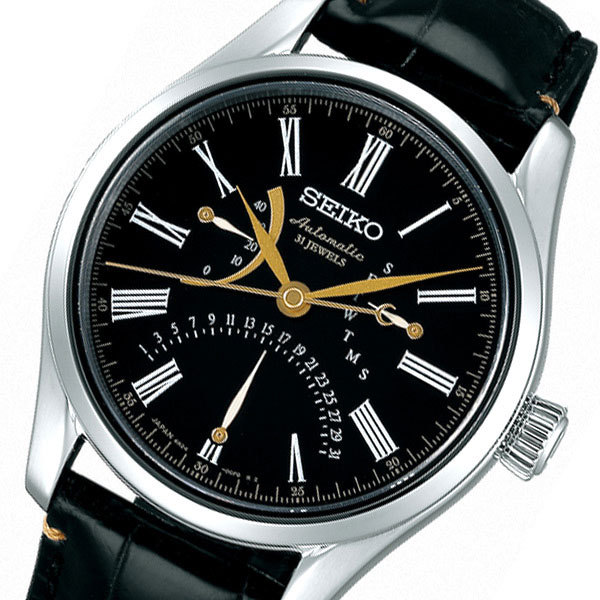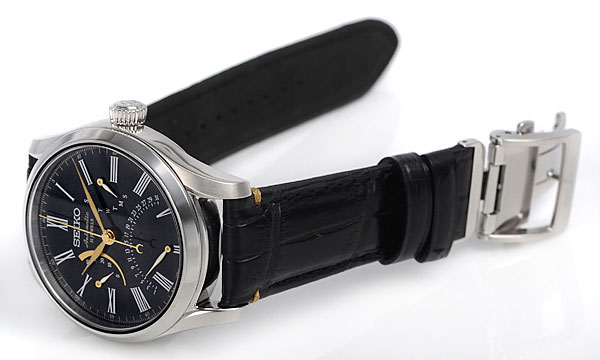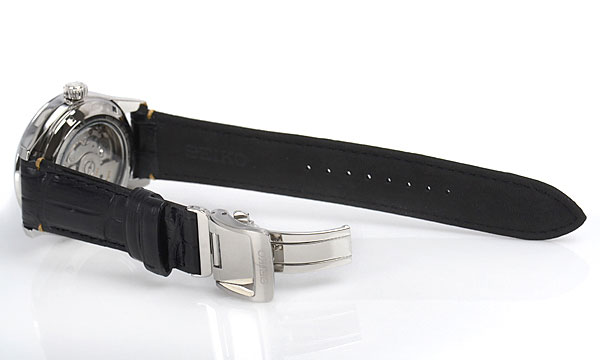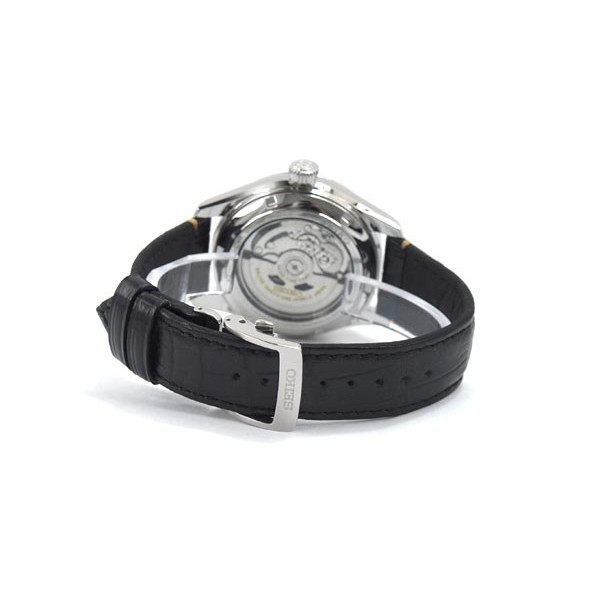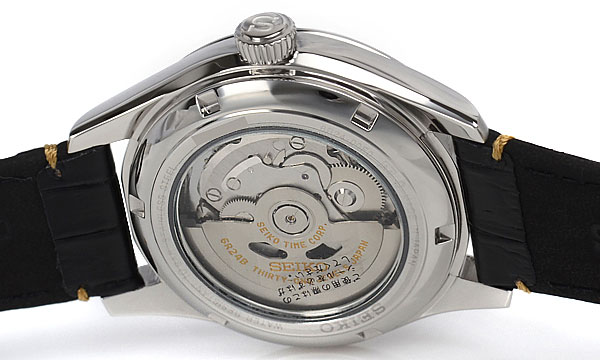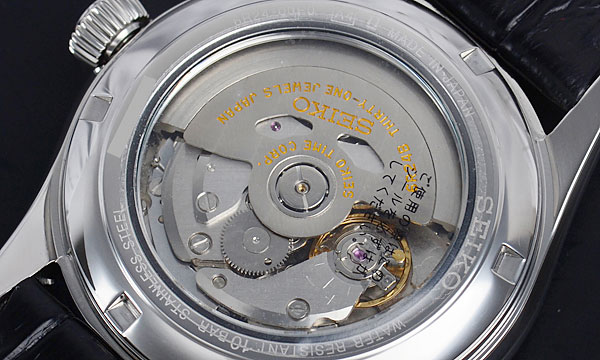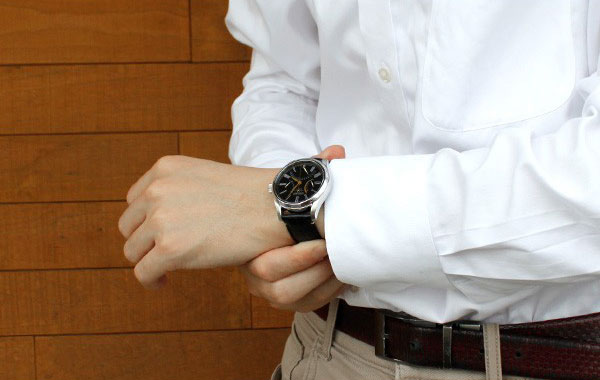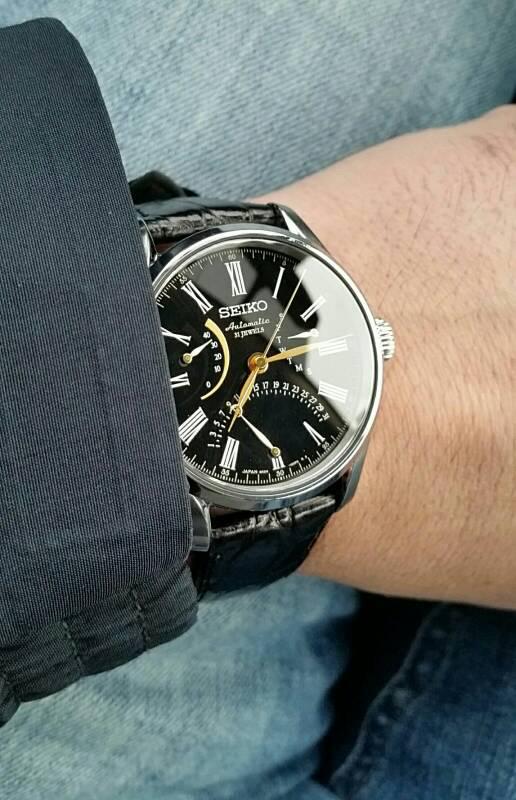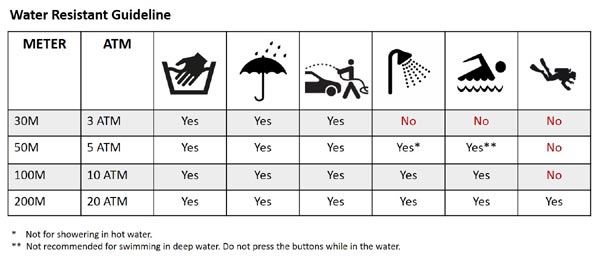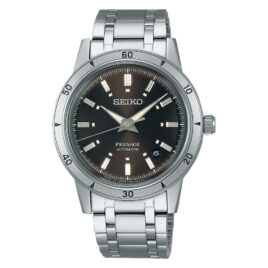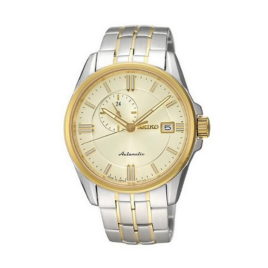Description
SEIKO Presage SARD011 Specifications :
| Feature |
| ||||
|---|---|---|---|---|---|
| Driving system | Automatic with manual winding mechanism | ||||
| Caliber Number | 6R24 | ||||
| Case | Stainless steel case | ||||
| Case back | Stainless steel and glass | ||||
| Glass | Curved sapphire crystal | ||||
| Glass coating | Anti-reflective coating on inner surface | ||||
| Drive duration | Power reserve: 45 hours | ||||
| Accuracy | -15 to +25 seconds per day (when static) | ||||
| Water resistance | 10 bar water resistance | ||||
| Magnetic reluctance | Magnetic resistance | ||||
| Size | H47.8mm x W40.5mm x D13.2mm | ||||
| Weight | 93g |
SEIKO Presage SARD011 Features :
- See-through case back
- Screw case back
- Urushi lacquer dial
- Jewels: 31 jewels
- “Retrograde” date and day display
- Power reserve
- Stop second hand function

Urushi is a type of lacquer processed from the sap of the Japanese lacquer tree. With a history dating back to Japan’s Jomon period (13,100 BCE– 400 BCE), Urushi is said to have been used not only as a coating and ornamentation, but also as an adhesive to bind handgrips to stone axe handles. Urushi was subsequently used for its antiseptic and preservative properties to protect valuable items such as furniture and musical instruments from wear, and was eventually elevated to use as an aesthetic element in works of art. Traditional Urushi lacquerware techniques are still employed throughout Japan.
Of particular renown in Urushi handicraft is the city of Kanazawa in Ishikawa Prefecture, the former Kaga Domain. Maeda Toshitsune, the third feudal lord of the Kaga Domain who lived through the final phase of the turbulent Sengoku period and into the Edo era, summoned renowned craftsmen of all trades from across Japan to the region’s Osaikusho workshops. It is said that the techniques employed by the famed Urushi craftsmen brought to Kaga Domain in this way are the origin of today’s Kanazawa lacquerware. Kanazawa continues to give rise to numerous master craftsmen, boasting a unique tradition of Urushi handicraft incorporating samurai culture and a gold lacquer technique known as Maki-e. (more)




